Tulips are perennial outdoor plants that are pretty easy to handle. But if you notice that your tulips are dying, it is because of improper care. Even though they are easy to care for plants, it doesn’t mean we should ignore their basic requirements.
In this article, we shall learn why are your tulips dying so fast and how you can keep them alive.
Improper lighting, watering problems, poor drainage soil, over-fertilization, pest infestations, root rot disease are the common problems due to which your tulips are dying. To keep your tulips alive, provide them with proper lighting, correct watering, and look out for possible pest infestation.
You need to identify the actual problem and address it accordingly to treat your plant. This article will help you learn about each problem in detail with their respective solutions.
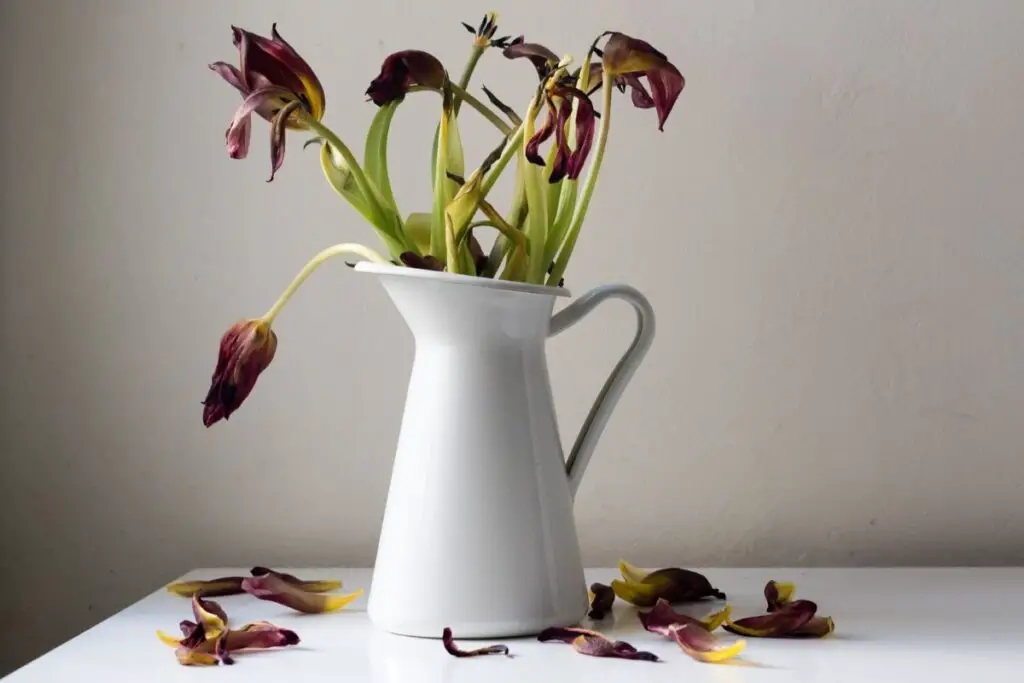
Signs of dying tulips
You will notice various signs if your tulips are dying. Here are the signs which you might see if your tulips are struggling:
- Wilted leaves
- Yellow foliage
- Brown tips on leaves
- Brown burnt pots on the leaves
- Droopy leaves
- Falling leaves
- Leggy growth
- Stunted growth
- Root rot
With the help of the signs, you can identify the problem your tulips might be experiencing. If you want your tulips to stay healthy, you need to study each sign in detail to know how to tackle them.
Why are your tulips dying so fast?
Various causes lead to your tulips are dying fast. Now let us list out all the problems which can make your tulips suffer:
- Watering issues
- Improper sunlight
- Excessive fertilization
- Poor quality soil
- Poor air circulation
- Pest infestation
- Fungal diseases
- Lack of pruning
Watering problems
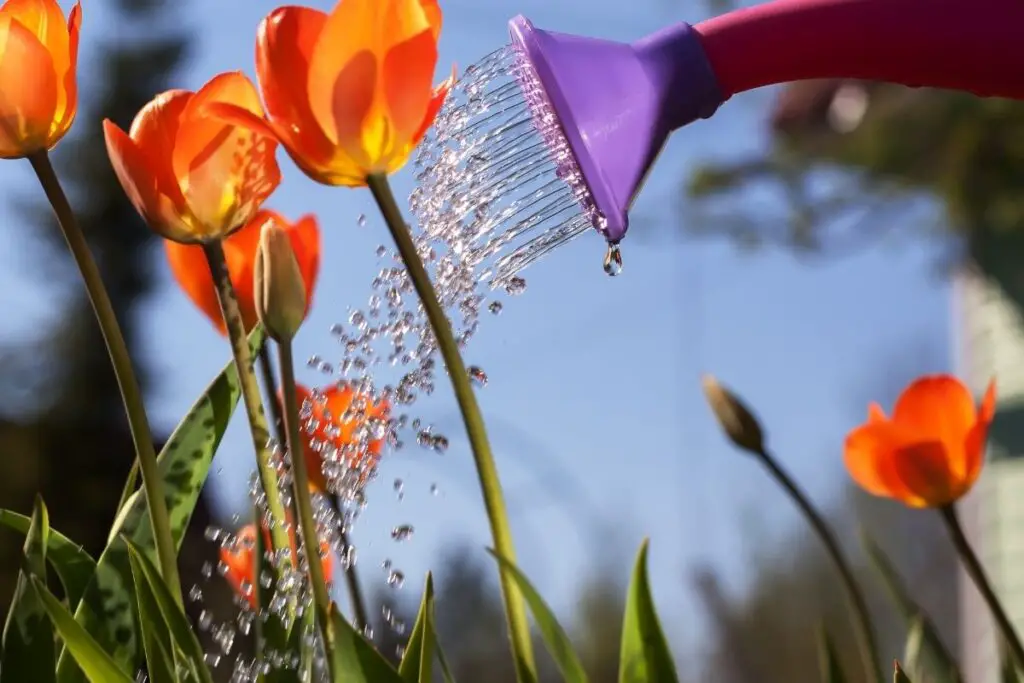
Problems related to watering are common reasons for your dying tulips.
Tulips need water in a considerable amount. Both overwatering and underwatering can make your tulips die. Underwatering will make the soil dry for an extended period.
If the soil remains dry for an extended period, the plant will fail to absorb nutrients and moisture from the roots required for getting energy. Due to lack of energy, tulips will not function properly, which will lead to their death.
Yellowing of leaves is the common sign of underwatering. On the other hand, overwatering also makes the plant ill, and the plant can die. In the case of tulips, overwatering is more likely to be occurred than underwatering.
Tulips typically need to be watered once a week. If these plants are overwatered, the soil gets soggy and becomes difficult for the roots to breathe, and gets completely damaged.
Due to injured roots, the plants fail to get water and nutrients, which affects the growth and could be the reason behind the dying tulips.
Overwatering can also cause root rot disease, which we will discuss later in detail. Drooping and falling of leaves are common signs of overwatering.
How to fix this problem?
You can fix both the problems of overwatering and underwatering. Let’s learn how.
In case of overwatering:
- You need to examine if your tulips need water or not. Stick the finger at least 2 inches deep and check the soil moisture level. If the soil feels sticky, the soil is moist, and wait until the soil gets dry.
- If your tulips are not getting enough sunlight, transplant them into a new location. Make sure you choose a location where they will get direct sunlight for at least 6 hours straight.
- While transplanting, remove the injured roots and keep only the healthy ones. Be careful while doing this, as it is a sensitive process.
- Try to provide oxygen to the roots by creating space. You can make small holes inside the soil for doing this.
- Prune your tulips to recover the damaged roots as it helps lighten the pressure on the root system.
In the case of underwatering:
- Try to avoid extreme heat as the process of evaporation and transpiration increases. Due to this, the soil dries up quickly, which can cause underwatering.
- Water your tulips after checking the moisture level of the soil.
- While watering, make sure the soil thoroughly absorbs the water.
- You can also replace the old soil with a new one with good moisture retention capacity.
Also read:
- How Often Do Tulips Need To Be Watered? (Tulip Watering Needs)
- How To Save Overwatered Tulips? (Possible Signs, Causes & How To Fix)
Looking for gardening supplies? We have tested 100's of products before recommending them to you guys. Check out our best pick below:
| Image | Gardening Supplies | Best Price? |
|---|---|---|
 Top
Top Top
Top | Raised Garden Bed Kit | Check On Amazon |
 | XLUX Soil Moisture Meter, Plant Water Monitor, Soil Hygrometer Sensor for Gardening, Farming, Indoor and Outdoor Plants, No Batteries Required | No Results |
 Top
Top Top
Top | 82 Pcs Garden Tools Set and Extra Succulent Tools Set | Check On Amazon |
 | Joeys Garden Expandable Garden Hose with 8 Function Hose Nozzle, Lightweight Anti-Kink Flexible Garden Hoses, Extra Strength Fabric with Double Latex Core, (50 FT, Black) | No Results |
 Top
Top Top
Top | Dual Chamber Compost Tumbler | Check On Amazon |
 Top
Top Top
Top | Sunnyglade Plant Stakes | Check On Amazon |
 Top
Top Top
Top | Organic Cold Pressed Neem Seed Oil | Check On Amazon |
 Top
Top Top
Top | Mighty Mint Gallon :-Insect and Pest Control Peppermint Oil | Check On Amazon |
 Top
Top Top
Top | Scotts DiseaseEx Lawn Fungicide | Check On Amazon |
 Top
Top Top
Top | Jacks Classic 20-20-20 All Purpose Fertilizer | Check On Amazon |
 Top
Top Top
Top | 30,000 Seeds Pollinator Attracting Wildflower Mixture | Check On Amazon |
 Top
Top Top
Top | Survival Vegetable Seeds Garden Kit-Over 16,000 Seeds | Check On Amazon |
Improper sunlight

Improper sunlight can make your plant sick and cause them to die. Tulips need adequate direct sunlight, especially during cold weather conditions.
If they get insufficient sunlight, the plants will fail to get energy from the sun required to regulate photosynthesis. As the process becomes slower, the tulips find it challenging to survive, and they die.
On the other hand, excessive sunlight can also create an issue for tulips to survive. The plant suffers mainly during hot weather conditions and can sunburn if the heat is extreme.
Due to too much sunlight, tulips suffer from dehydration which can cause the plant to die. Try to provide the proper amount of sunlight to your tulips to encourage them to grow strong and healthy with a long-lasting lifeline.
How to fix this?
You can solve the problems with the steps given here.
In case of low light:
- Remove hurdles or obstacles blocking the light.
- If your tulips are not getting enough direct sunlight, transplant them into a new location. Choose the location wisely where the plants will get at least 6 hours of direct sunlight.
In case of too much light:
- If the weather is hot, try to cover your tulips with a shade so that the plant will stay away from sunburn.
- Try to keep the tulips as moisturized as possible, not dehydrated.
Also read: How Much Sunlight Do Tulips Need? (Tulip Light Needs)
Excessive fertilization
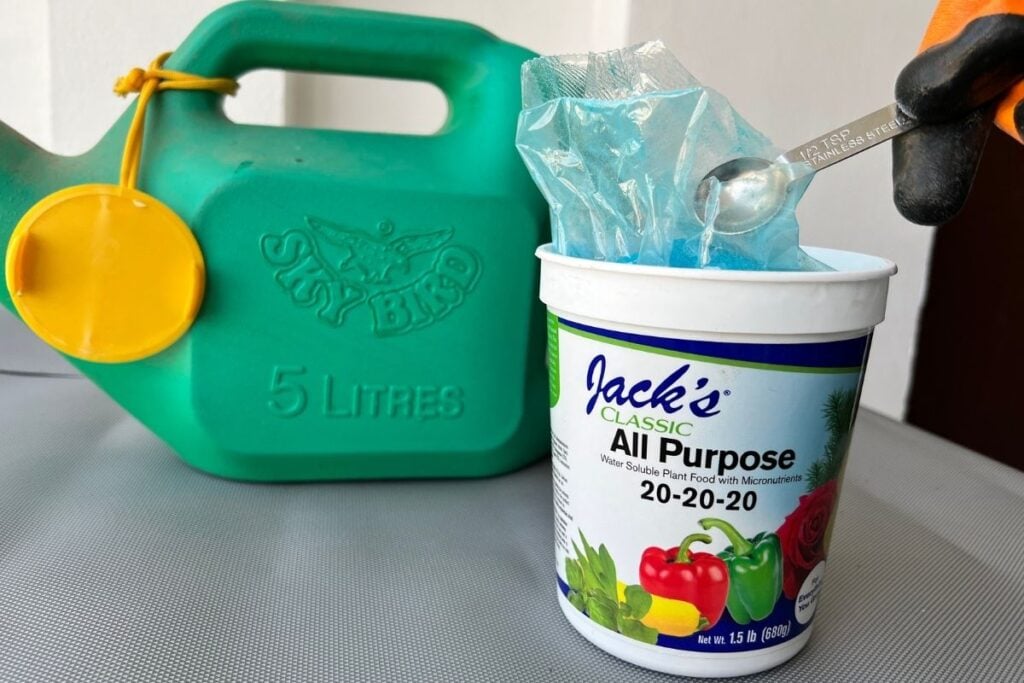
Tulips don’t need to be fertilized all the time. They can even survive without any extra nutrients.
Providing them with excess nutrients can stunt their growth, and they can start dying. It happens because fertilizers contain salts, which absorb almost all the water present inside the soil.
The tulips fail to absorb nutrients and water from the roots, which causes weakness to the plants. Due to weakness, they don’t get any energy to survive and causing the death of tulips.
Tulips need a small amount of nutrients over time. Slow-release fertilizer is suitable for tulips.
How to fix this?
- Provide your tulips with a slow-release fertilizer in the ratio10:10:10. It is suitable for tulips because this fertilizer breaks down nutrients in the soil from time to time slowly without causing the problem of over-fertilization.
- Fertilizing your tulips by applying the liquid method is one of the best choices to avoid over-fertilization.
- If you have over-fertilized your tulips, remove the topsoil by scratching it and replacing it with the new one.
- If the fertilizer is already inside the soil, replant tulip in a new location by applying new organic soil.
Also read: What Is The Best Fertilizer For Tulips? (Organic+Inorganic)
Poor quality soil

Tulips can also die due to the poor quality of the soil. The soil is poor if:
- Drainage is too fast or too slow.
- The soil has less nutrient content.
- PH level is not correct.
All three factors can be the reason for your poor soil. Tulips stay healthy and grow faster if the soil is neutral, well-draining, and higher in nutrients.
If the soil drainage is poor, it can cause the problem of overwatering and underwatering. Both the problems can cause severe issues and even kill the entire plant.
Wrong pH levels can also create problems with tulips. If the soil gets too acidic, it reduces calcium, potassium, and magnesium.
On the other hand, the calcium content increases if the soil is too alkaline. Due to this up and down of the nutrients in the soil, the tulips find it challenging to survive.
The soil should be neutral for tulips; otherwise, it will cause health issues.
How to fix this?
- Choose soil with good drainage capacity and moisture retention.
- You can improve the texture of the soil by adding manure compost, organic matter, and peat moss. It helps to improve soil drainage.
- If you want to provide nutrients to the plant, mulch the soil surface in a small amount by applying compost and wood ashes.
- Bone meal, Epsom salt, and coffee can also provide nutrients to the tulips.
- If the soil is too alkaline for your tulips, you can alter it by adding acidic mulches to the soil surface like pine needles, peat moss, and animal manure.
- But if the soil is acidic, add wood ashes or limestone powder to bring them back to neutral.
Also read: What Kind Of Soil Is Good For Tulips? (Best Soil Mix)
Poor air circulation
Poor aeration among the roots can stress your plant, making it difficult for tulips to survive.
If air circulation is blocked between the roots, they can suffer from problems like overwatering, nutrient deficiencies, poor bloom, pests, and diseases.
You should provide the tulips with good air circulation to prevent fungal infections and encourage faster growth.
How to fix this?
- Soil should be light and loose so that the roots get enough oxygen. You can improve this by adding sand, manure compost, or organic matter.
- If the air circulation has been blocked due to overwatering, provide the plant with a whole day of direct sunlight so that the excess water can dry up quickly.
- If the soil is too compressed, make small holes inside the soil to provide aeration among the roots.
Pest infestation
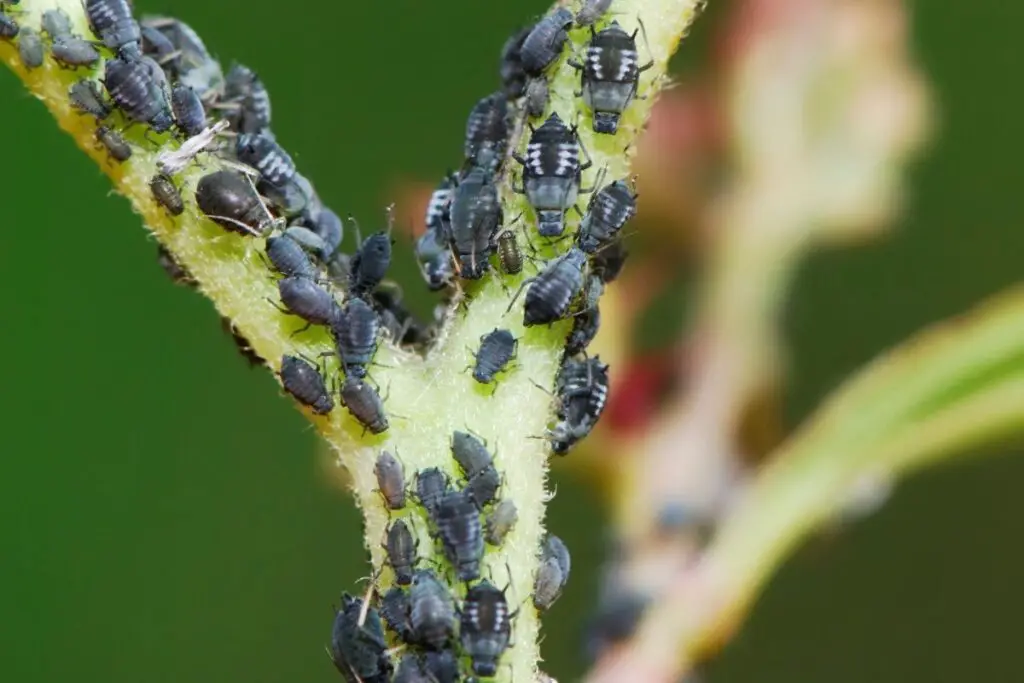
If any pests attack the tulips, they will weaken the plants and even cause death. Almost all kinds of pests suck out sap from the stems and leaves of the plants, leaving them completely weak.
The most recurring pests found on the tulips are aphids, spider mites, larvae, slugs. These pests take out all the nutrients and cause severe injury to them.
Due to a lack of nutrients, the growth completely stops, and after a point of time, the tulips begin to die. If you notice any pests on your tulips, treat them as fast as possible to avoid further problems.
How to fix this?
Here are solutions for treating all the possible pests that can attack tulips.
To fix aphids:
- At first, wash your tulips by spraying with a strong spray.
- Use neem oil or insecticidal oil and spray it all over the plants.
- Bring some lady beetles and keep them close to your plants. They help to keep away aphids by feeding on them.
To fix spider mites:
- To get rid of spider mites, make a solution by mixing ½ cup of buttermilk and 4 cups of wheat with 5 gallons of water and spray it over your tulips.
To fix slugs:
- At first, try to remove them by picking them up from your hands or use a water pipe for washing your tulips so that the slugs will slip away and fall off.
- Apply sand around the plant as they don’t like tiny shards of the sand.
- You can also keep sharp eggshells so that the slugs won’t return.
- This method is also applicable for keeping the plant away from larvae.
Also read: Bugs On Tulips: (Common Pests, Identification+How To Get Rid)
Fungal infections
Tulips can suffer from various fungal infections that cause the plant’s death. It happens primarily due to overwatering.
If the tulips sit in the water for a long period, various kinds of pathogens and fungal infections start to occur inside the soil, ultimately injuring the roots. If the roots are damaged, the tulips will not survive.
The common fungal disease of tulips is botrytis blight, crown rot, pythium root rot, root-knot nematode, basal rot. If tulips are attacked by any of the fungal diseases listed above, it can cause severe damage to them.
You need to look after your plant frequently to keep the plant healthy and safe.
How to fix this?
- Prune all the infected parts of the plant to avoid further damage.
- Avoid watering your plant frequently, as most fungal diseases develop due to damp conditions.
- Don’t water your plants from the above. If you water the leaves of tulips, various fungal infections will get a chance to attack them. Water them only on the soil surface.
- Good air circulation keeps the fungal infections away. Try to provide air in between the roots to keep them healthy.
- After removing all the damaged parts, spray the plant with neem oil to prevent fungal infections in the future.
Lack of pruning
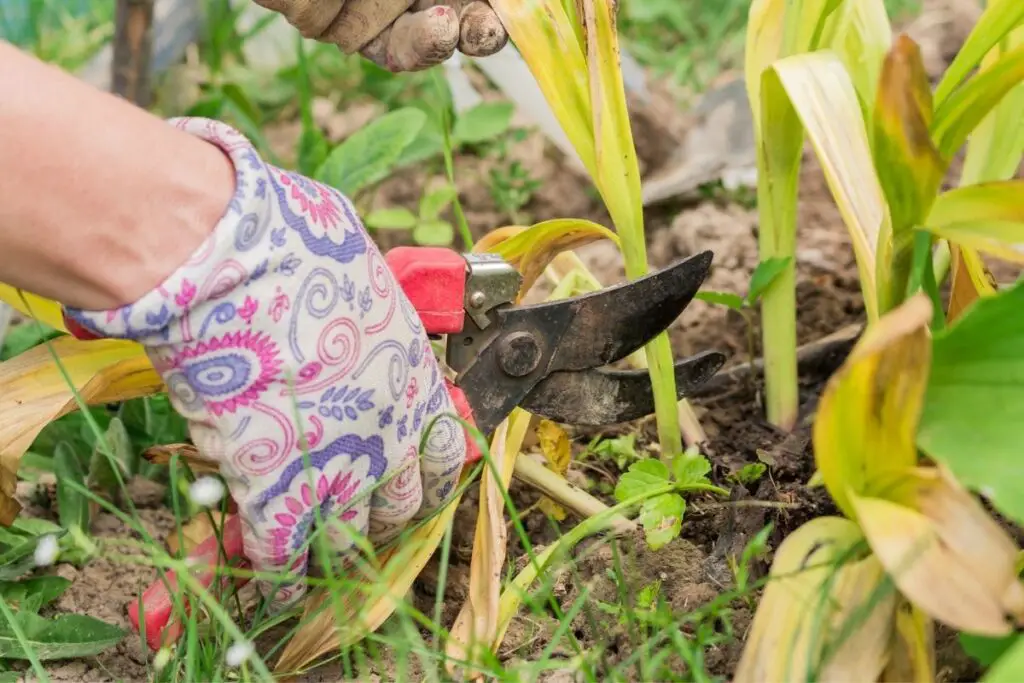
Sometimes, tulips can get leggy because of low light or too much heat. When it happens, the plant becomes weak, pale, and tired.
Because the stems get extremely thin and fragile, it breaks, which makes it difficult for plants to survive and can cause death.
Dried and damaged leaves can also create a problem for tulips as they can stunt their growth. In other cases, the leaves of tulips get infected by some pests that can cause infections.
If the damaged and infected leaves are not pruned off in proper time, it can also infect other leaves, which affects the plant’s health. You should permanently remove all the damaged leaves to avoid killing your plant.
How to fix this?
- Check the tulips frequently and find out whether you should remove any parts.
- As soon as you see any leggy growth, cut them off.
- Once you notice any damaged leaves, remove them to prevent further damage.
Final words
Provide your tulips with proper water, air, sunlight, and fertilizers. Taking care of all these factors should keep your plants healthy. Don’t panic if you notice any issues with your tulips. Check the signs and treat the plants as soon as possible.
While transplanting your tulips, be very careful and avoid doing any further damage. Keep a check on your tulips and prune them from time to time to encourage growth at a faster rate.
Source: Wikipedia, North Dakota Stae University, The Royal Horticultural Society.
